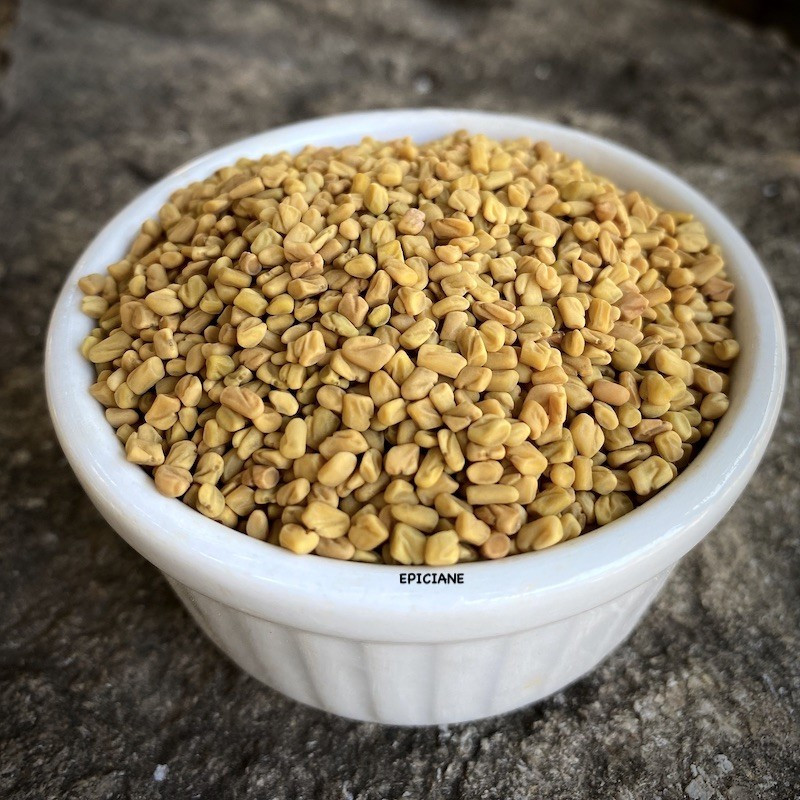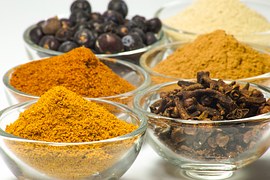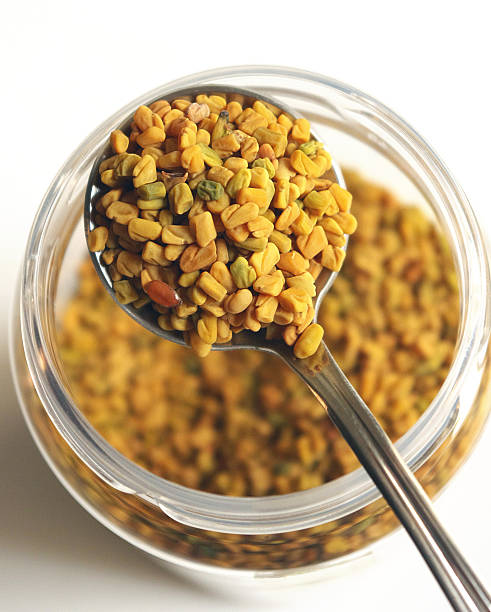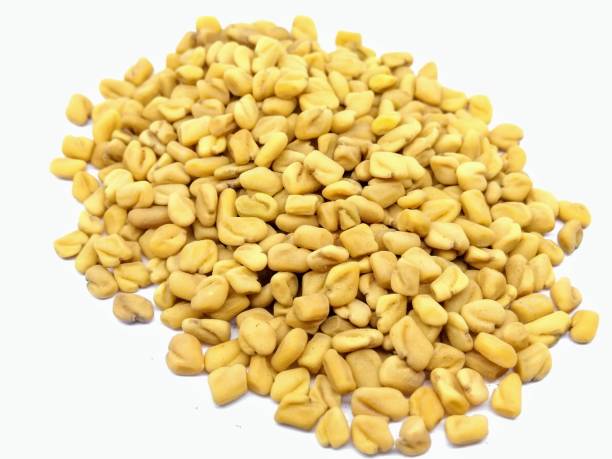
Reference: carrymadras


It has a cereal-like taste with a hint of bitterness.
It is an essential ingredient in North African cuisines and numerous spice blends worldwide. Moreover, it is packed with benefits!
 Delivery
Delivery
Mondial Relay
 Returns
Returns
See conditions
 Payments
Payments
100% secure
Delivered in a resealable bag
 Fenugreek is widely used in many countries and is an essential component of numerous spice blends, often ground beforehand: Madras curry, Garam Masala from India, Ras-el-Hanout, and tagines from North Africa, Colombo from the Caribbean. Its primary culinary role is as a "binding" agent in dishes, as the seeds (or their resulting powder) swell and soften when in contact with water or food.
Fenugreek is widely used in many countries and is an essential component of numerous spice blends, often ground beforehand: Madras curry, Garam Masala from India, Ras-el-Hanout, and tagines from North Africa, Colombo from the Caribbean. Its primary culinary role is as a "binding" agent in dishes, as the seeds (or their resulting powder) swell and soften when in contact with water or food.
Before use, whole seeds should be roasted in a pan to reduce bitterness and make them easier to crush. Fenugreek is also a component of "toasting seeds," one of the key ingredients in Colombo blends.
In addition to its culinary uses, fenugreek is full of health benefits.

Origin: India
Scientific name: Trigonella foenum-graecum
Other names: Sénégrain, Trigonella.
 The crushed seed has a distinct "heavy" aroma. However, fenugreek seeds are packed with nutrients, including iron, phosphorus, sulfur, and vitamins (A, B1).
The crushed seed has a distinct "heavy" aroma. However, fenugreek seeds are packed with nutrients, including iron, phosphorus, sulfur, and vitamins (A, B1).
Among its many virtues, fenugreek boosts lactation in mothers, and its carbohydrate-rich seeds serve as an excellent fortifier.
For medicinal purposes, crushed seeds can be consumed, or the water in which they have been soaked for several hours can be drunk (often sweetened with honey to improve its slightly bitter taste). In North Africa, where fuller figures are often admired, women use fenugreek to gain weight as it stimulates appetite.
Fenugreek seeds can also be sprouted and eaten as young shoots in salads.
Fenugreek is also used in the production of Viandox.
Consuming fenugreek in large amounts can give a distinctive odor to urine and sweat.
Fenugreek is also utilized in organic farming as a green manure. It is sown in spring and buried in the soil before flowering to prevent it from reseeding.
Additionally, the plant is a dye plant, capable of coloring textiles in a beautiful crimson red.
Fenugreek, or Trigonella, is an annual herbaceous plant from the legume family, growing up to 60 cm tall. It thrives in open fields on calcareous-rich soils. Its leaves are composed of three oval leaflets, resembling clover. The yellowish flowers yield curved pods over 10 cm long in August/September, containing 10 to 20 angular seeds of light brown color, with a characteristic aroma, bitter taste, and hard texture.
Fenugreek is native to North Africa and the Mediterranean basin and has spread early to Mediterranean and Indian regions, reaching as far as China. In France, it is found from Gironde to the Italian border.
°°°
In ancient Egypt, fenugreek was used as an aromatic agent as early as 1500 BC to embalm the dead and purify the air in homes and places of worship. Beyond its invigorating properties, it was believed to combat respiratory infections.
Fenugreek was also used as forage in antiquity, earning it the name "Greek hay," which later evolved into "fenugreek." It is still used as forage in India today.
English: Fenugreek German: Blackshornklee Arabic: Halba
*****
Data sheet
Reference: carrymadras
Reference: 20825701
Reference: 20818002
Reference: 20703402
Reference: 20711101
Reference: fenouilE
Reference: 10M6741201
Reference: coriandreE
Reference: 9N76632004
Brand: Epiciane
Reference: 20701706
Reference: 11N7892701
Reference: 12N7949601
Reference: celerigraines
Reference: grainesaroussir
Reference: 00033669-0001
Reference: 2N7072401
Reference: 11N7754201

It has a cereal-like taste with a hint of bitterness.
It is an essential ingredient in North African cuisines and numerous spice blends worldwide. Moreover, it is packed with benefits!